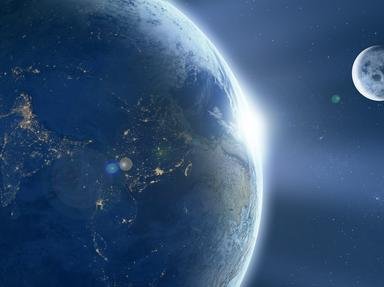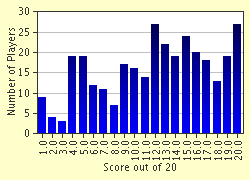Quiz Answer Key and Fun Facts
1. Located at 36°N 16°W is Mare Imbrium, what is it also known as in English?
(All locations are taken from Rand McNally's Official Map of the Moon)
2. Located at 30°N 17°E, is Mare Serenitatis. What is its very well known English name?
3. Located at 18°N 50°E is Mare Crisium, or in English, better known as which of the following?
4. Lacus Somniorum is located at 37°N 35°E, but what is it called in English?
5. Sinus Aestuum, located at 12°N 9°W, is sometimes known by which of these names in English?
6. Mare Fecunditatis is located at 4°S 51°E and is known as which of the following in English?
7. Located at 44°N 27°E is Lacus Mortis and can be translated in English as which of the following?
8. Oceanus Procellarum is located at 10°N 47°W and is otherwise known as the Ocean of what?
9. Sinus Iridium is located at 45°N 32°W and is known as which of the following in English?
10. Located at 19°S 14°W is Mare Nubium also known as which of the following in English?
11. The Palus Epidemiarum, located at 32°S 29°W is better known in English as?
12. Located at 54°N 46°W is the Sinus Roris, which is known in English as which of the following?
13. Mare Humorum, located at 23°S 38°W, is better known in English which of the following?
14. Located at 14°S 34°E is Mare Nectaris, and it has what English name?
15. Palus Somni is located at 15°N 46°E and in English is known as?
16. Mare Frigoris is located at 56°N 4°E. What is it known as in English?
17. A slightly different format for this question. Located at 6°N 67°E, is the Sea of Waves, but what is it known as in Latin?
18. Mare Spumans, located at 1°N 65°S, is known as what in English?
19. Located at 27°N 1°W is Palus Putredinis, and is translated as what in English?
20. Mare Vaporum, located at 14°N 5°E is better known in English as?
Source: Author
Agent_Beron
This quiz was reviewed by FunTrivia editor
crisw before going online.
Any errors found in FunTrivia content are routinely corrected through our feedback system.

